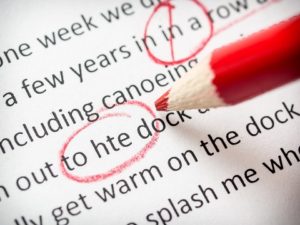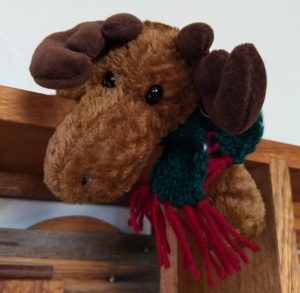People are often confused about the use of which or that. I hope to clear that up in today’s post.
That or Which?
That introduces restrictive or essential clauses. Which generally introduces non-restrictive or non-essential clauses. A restrictive clause is part of the sentence that describes a noun. Without it, the meaning of the sentence would change. “The restaurant that my cousin opened closed yesterday.”
Without the words “that my cousin opened,” the sentence could refer to any restaurant. Thus, that my cousin opened is essential to the meaning of the sentence and does not have commas surrounding it.
“The restaurant next door, which always serves excellent soup, added pies to its menu last week.” This sentence can make it on its own without the clause “which always serves excellent soup.” Remove it and the sentence still makes sense. That makes the clause non-essential or non-restrictive. Surround it with commas.


Of course exceptions abound. Instead of introducing more confusion, I suggest following the guidelines above. Or go for the simplest choice and leave that out altogether:
Instead of, “The restaurant that my cousin opened closed yesterday,” opt for “The restaurant my cousin opened closed yesterday.”
However, you may not use that in a non-essential clause. “My ailing laptop, that I have always hated, will soon be replaced.” Nope. You have to use which in that clause. Or change the sentence entirely if it is too confusing: “My ailing and long hated laptop will soon be replaced.”
If you’ve already used this, that, these or those to introduce an essential clause, you may use which to introduce the next clause.
“That is a problem which many supervisors must face at evaluation time.”
“Those cartons, which should have arrived yesterday, can be stacked in my office.”
Consider streamlining your sentence by leaving out which or by revising your sentence.
“That is a problem many supervisors must face at evaluation time.”
“The cartons that should have arrived yesterday can be stacked in my office.”
Our objectives are clarity first, conciseness next. Avoiding unintentional silliness is also a good idea. “That Charlie. He doesn’t have the guts that it takes to get that business going.” Get rid of them all. “Charlie doesn’t have the guts to get a business going.”
One more point about that. That is used to refer to things or groups, who to people. “Melissa is the woman who shares my cubicle.” “She belongs to an organization that supports animal rights.”
Being a person who is fond of animals, I often refer to my pets using who. You may decide which you will use.
The purpose of grammar is to make our meaning clear. Remember that, please.


Now which should I remember? 😉 Sorry, couldn’t resist!
Excellent and useful blog post, thanks Kathy!
Heh, heh.
I always seemed to know which to use where, but never knew the reason. Thanks for enlightening me!
Hi, Gale!
Glad you found it helpful.
This was a very enlightening post. The only rule I’d learned before was from my father, who told me about 50 years ago “that” could often be removed from a sentence without changing its meaning, and over the years I’ve noticed he was right.
My first editor eliminated so many thats from my novel, it could have been re-classified as a novella!